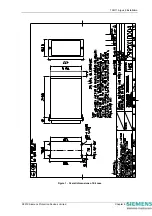
7SG11 Argus 8 Commissioning
1 Introduction
Before any commissioning work is carried out, the user should be familiar with the following sections :
•
Section 1 - Description of Operation.
•
Section 3 - Relay Settings.
•
Section 6 - Installation. Particular attention should be paid to unpacking, storage and handling.
The Argus range of relays are fully numeric and incorporate many self-checking features which, if a fault
occurs on the relay, will inhibit the protection functions of the relay and give an alarm output. This inherent
self-checking gives high levels of confidence in the relays which means that commissioning tests do not have
to be as comprehensive as with static or electromechanical type relays.
The recommended commissioning procedure for this type of numeric relay is to carry out the following tests :
1 Examine the relay for any damage.
2 Energise the relay and check that the hardware is working correctly.
3 Verify that the settings are as required for the application.
4 Verify that the external wiring is as required by the scheme diagram.
5 Perform
secondary
injection tests.
6 Perform on-load tests.
2 Required test equipment
The following equipment will be required to perform commissioning tests on Argus 8 relays.
•
500V Insulation resistance test set.
•
A variable ac voltage source, ideally a portable relay test set e.g. Doble, Omicron etc.
•
Electronic Timer. (Required only if portable relay test set is not available).
•
Multimeter with ac and dc voltage ranges.
•
A dc supply with nominal voltage within the working range of the relay’s dc auxiliary supply
rating.
•
A dc supply with nominal voltage within the working range of the relay’s dc status input rating.
•
Continuity tester e.g. multimeter.
•
Phase
rotation
meter.
Additional equipment for testing the communications channel :
•
Portable PC with an electrical-to-optical RS232 converter and fibre optic connectors.
•
A copy of Reydisp Evolution software installed on the PC to exercise the communications
channel.
•
Optional printer (for printing a hard copy of the settings file if required).
©2010 Siemens Protection Devices Limited
Chapter 7 Page 3 of 12
















































